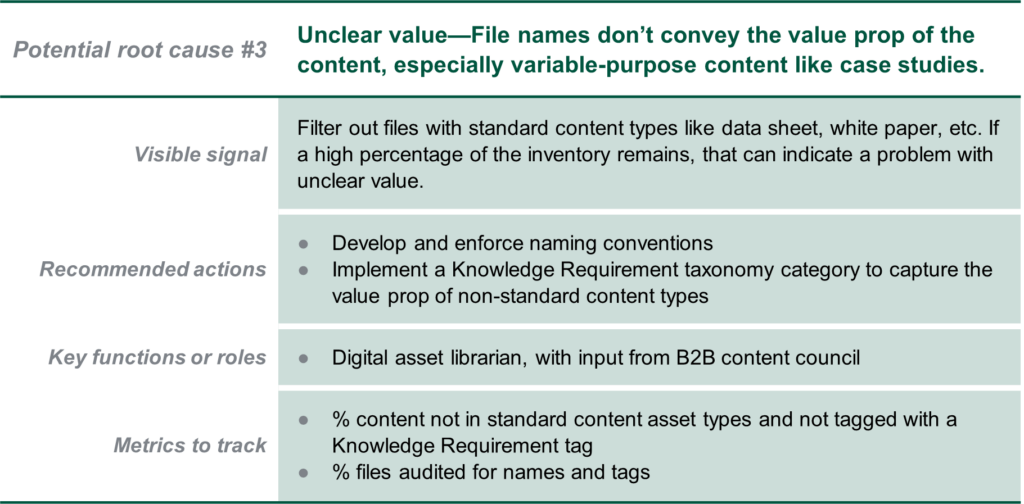Want Better Content Performance? Fix It At The Source.
Do you ever wonder why content performance issues just won’t go away? Medical science offers some insight. When I was seven years old, my mother was disabled for months with agonizing leg pain. Eventually, the doctors discovered that she had a few herniated disks, and she went to a big hospital in the state for surgery. Problem solved! That was how I learned the medical term “referred pain” — pain felt at a location other than its origin. To solve the pain permanently, you have to address the root cause. Otherwise, you’re just wasting time.
We depend on B2B content to keep our organizations running, but it’s hard to optimize. That’s because it’s complex — created by many functions and many individuals in many systems and languages for many audiences and purposes. Frankly, it’s not surprising that complaints about findability, relevance, and quality are rife. Here’s the deal: Most content complaints are referred pain. And the kicker: Organizations can waste a great deal of time and effort applying solutions in the wrong place.
To Diagnose Problems, Look At The Patient
When I’m helping a client diagnose content performance issues, one of the first things I ask them to do is send me a content inventory report — one of those massive CSV downloads with a row for each file and dozens of metadata columns. I look at administrative metadata such as date, owner, and usage and descriptive metadata such as content asset type and product name. After an hour or two of pivoting, I can tell them things they never knew — or knew but couldn’t quantify.
That understanding is powerful. I’ll never forget the look on one executive team’s faces when they learned that 61% of their sales and marketing content had been used fewer than 10 times — and that most of their file names were useless. Personal pet peeve: File names that are part numbers or one-word wonders such as PN12345.pdf or Widget.pdf only work if robots are your target audience.
It’s like a doctor checking your vital signs, and I got to thinking, wouldn’t it be cool if anyone could do this?
Last year, I formalized this into a repeatable approach, and now it’s available to Forrester clients as a report and reference document. Leaders in marketing, digital, content, sales enablement, etc., can view the potential root causes of content performance issues and identify the right functions to resolve them. To put it into practice, the associated reference document helps their teams interpret the signals and implement recommended actions and progress metrics.
Example: How To Detect Root Causes Of Poor Findability
Here’s an example of how inventory signals can point to different root causes and remedial actions. I’ll use findability as the example because it’s the leading cause of content waste, selected by 92% of respondents in Forrester’s 2022 State of B2B Content report.



The full report contains seven root causes for findability issues, seven for relevance issues, and six for quality issues. Forrester clients can see it here and schedule a guidance session with me for a follow-up discussion.
